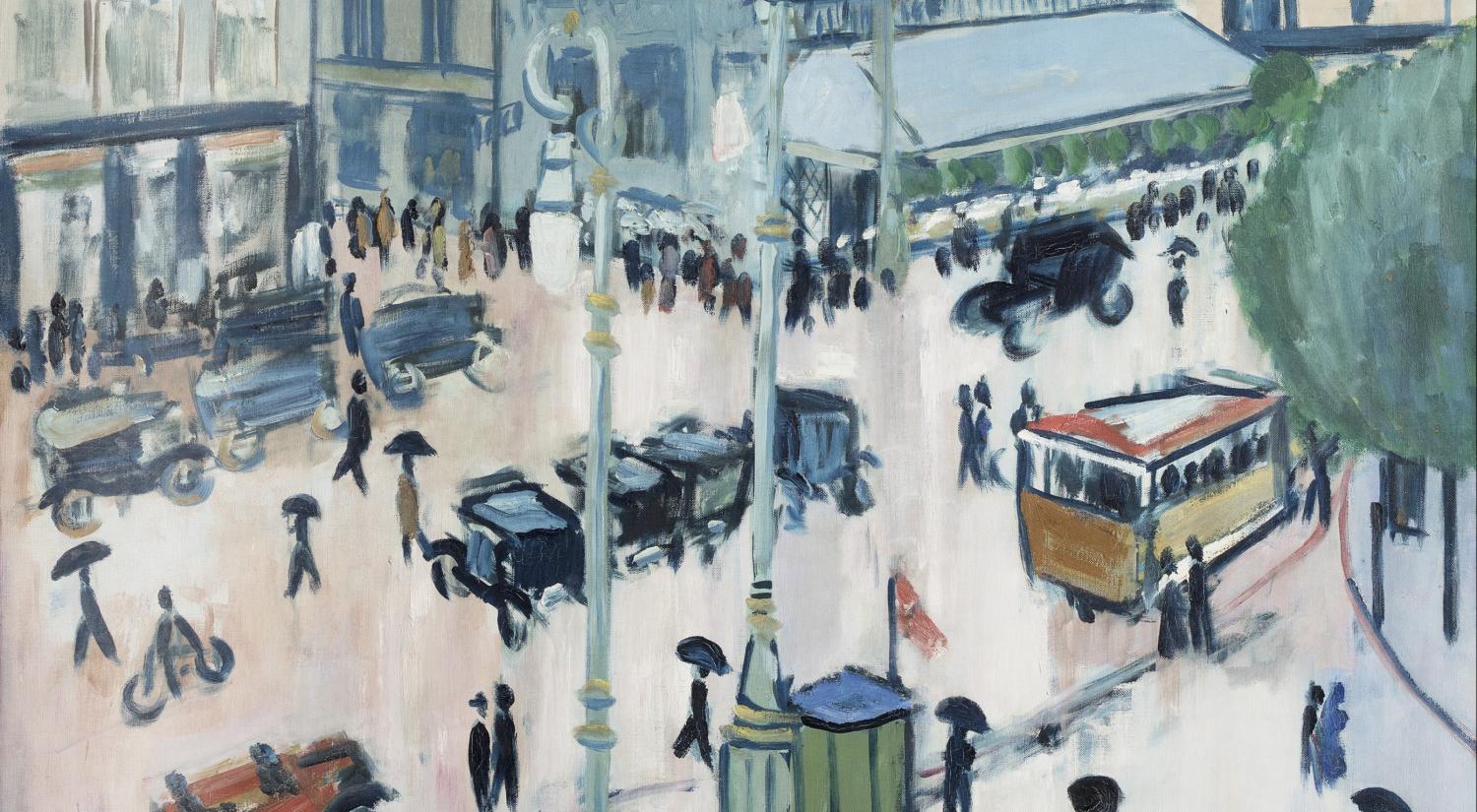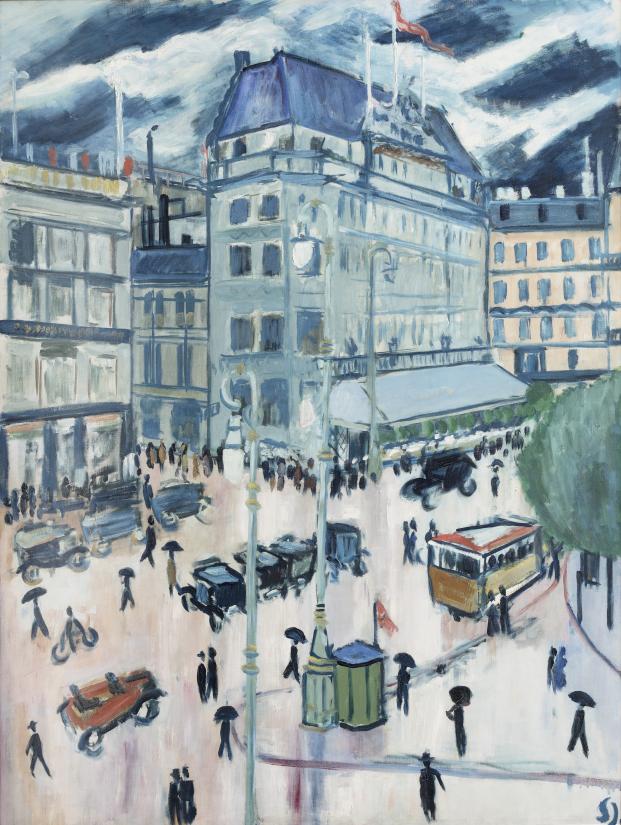Kongens Nytorv, named after the central square in Copenhagen that it depicts, dates from 1926 and was painted while Svend Johansen (1890–1970) was a member of the artist group De Fire (The Four). In this painting, which engages in a dialogue with well-known impressionist depictions of Paris, he makes the urban theme his own in the encounter with Copenhagen. Adopting a bird’s-eye perspective, he portrays the bustle of people, trams and the new automobiles on a rainy day in front of the elegant Hotel d’Angleterre. Here, modern life plays out in a golden triangle between the hotel, as a focal point of impulses from near and far, the Royal Danish Theatre, as the celebrated seat of culture and tradition and – just outside the image – the department store Magasin du Nord, a modern mercantile temple modelled on Parisian stores. Above hangs a dramatic sky with patchy clouds that forms an expressive contrast to the brightly lit street scene with its vertical brushstrokes.
‘Svend Johansen depicts the city as a stage where modern life unfolds within a sophisticated hierarchy of markers of modernity. At the same time, he creates an artistic field of tension that makes the painting something more than a banal paraphrase of impressionist cityscapes, which by then, during the inter-war period, had become old news. The painting represents a new, heroic style, where Johansen combines the impressionist gaze on the city with his own expressionist approach. This is a painting with swing, artistic ambitions and 1920s dynamism,’ says Sidsel Maria Søndergaard, director of Øregaard Museum.
De Fire – a new avant-garde
Today, Svend Johansen may be a less familiar name, but he played an important role in his own time. He graduated from the Royal Danish Academy of Fine Arts in 1916, two years after his debut at the Artists’ Autumn Exhibition, the key venue for young, experimental artists at the time. Here, he found kindred spirits in Vilhelm Lundstrøm, Karl Larsen and Axel Salto. They established a long-lasting collaboration and a close friendship and launched the magazine Klingen (The Blade) and the exhibition group De Fire. Later, Johansen became a creative set designer and scenographer in close collaborations with playwrights Kjeld Abell and Poul Henningsen, among others.
De Fire held their first group exhibition in 1921 at Den Frie Centre of Contemporary Art in Copenhagen. An entire room in the exhibition building was dedicated to Klingen – the group’s common platform and a call to bring good and true contemporary art to a broad public audience. The remaining rooms were a setting for self-expression at full blast, the artists describing themselves as ‘the four phenomena’. ‘We lived in heroic style,’ said Salto. A statement that reflects the group’s self-staging and strategic approach – and their shared artistic outlook: the heroic style. During this period, they engaged prominent earlier artists, such as Diego Velázquez, El Greco and Paul Cézanne, in dialogue, positioning themselves as successors to the masters or, in a waggish comment, as ‘Raphael’s divine role models’. With equal parts irony and megalomania, De Fire took on and distorted the old masters, often in large compositions. In their own perception, they represented a new, Danish avant-garde.
A missing piece in the museum’s collection
Kongens Nytorv beautifully complements the museum’s important collection of Copenhagen scenes. The collection includes examples of the contemporary belle époque notion of the city, as represented in Paul Fischer’s famous Copenhagen paintings and his fashionable depiction of the city’s social classes and character types. In the collection, Fischer’s more academic style is challenged by works representing the new directions chosen by younger artists during the early decades of the 20th century, including paintings by Edward Weie, Olaf Rude and Jens Søndergaard. These artists all addressed modernity and Copenhagen and put the artistic topic and method up for debate, for example by introducing novel compositions and the use of bird’s-eye perspective. With the acquisition of Johansen’s painting, the museum can now represent his original contribution to this popular topic category.
In autumn 2021, the new acquisition will be included in Øregaard Museum’s centenary exhibition.




